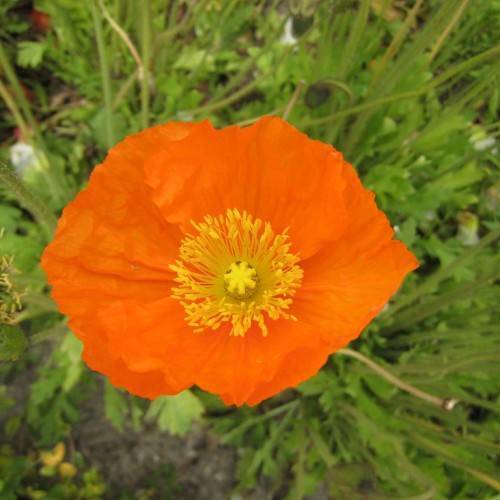
poppy
Papaver alpinum
Cycle:
Herbaceous Perennial
Watering:
Average
Hardiness Zone:
4 - 6
Flowers:
Flowers
Sun:
Full sun
Leaf:
Yes
Growth Rate:
Low
Maintenance:
Moderate
Salt Tolerant:
Yes
watering
Poppy (Papaver alpinum) should be watered regularly during its active growing season. During this time, water the plant when the top inch of soil is dry to the touch. If the soil is kept consistently moist, poppy will thrive. During the winter months, allow the soil to dry out slightly between waterings.
sunlight
Poppy (Papaver alpinum) plants prefer full sunlight for at least 8-10 hours a day. Morning sunshine is especially important for poppy plants since they are able to take full advantage of the sun's rays, providing needed warmth and nourishment. Morning light is also helpful for preventing disease, as it dries dew and morning moisture that could otherwise cause fungal infections on the leaves and flowers of the plants. Early afternoon light can be too harsh for poppy plants, so some shade should be provided in the middle of the day. If the temperature gets too hot, the flowers and foliage of the poppy plant may begin to wilt. Afternoons in areas with hot climates, like the desert, should be shaded. Sunset is once again a great time for poppy plants. The low sun will provide sufficient light without too much heat, allowing them to take in the sun's rays before nightfall.
pruning
Poppy should be pruned either in late winter or early spring, before new growth begins. This will encourage vigorous new shoots and flowers for the season. The amount of pruning should be minimal, so as not to remove the flower buds that will emerge throughout the summer. Cut back the stems to 6 to 8 inches above ground level, removing any dead, diseased, or spindly stems. This will also open up the plant to allow for improved air circulation.
FAQ
Do poppies symbolize anything specific?
Poppies are widely recognized as symbols of remembrance for those who have fought in wars. In particular, the red poppy is associated with World War I and is often worn in remembrance of those who died in places such as the trenches in Europe or the Western Front. The poppy is also seen as a sign of hope and is used to remember and honor those who have served in the armed forces. Additionally, poppies are symbolic of the beauty that can emerge from destruction because they are some of the first flowers to sprout after an area has been bombarded.
Are poppies native to all continents?
No, poppies are not native to all continents. Poppies primarily grow in the temperate regions of the Northern Hemisphere, particularly in Europe, Asia, and North Africa. In the United States, varieties of poppies can be found growing wild in certain regions. While certain species of poppies can be cultivated in the Southern Hemisphere, they are not commonly found growing in the wild.
Can we grow poppies as indoor Plant?
Yes, poppies can be grown as an indoor plant. Poppies are a popular choice for indoor gardeners because they don’t require a lot of care and will usually thrive in nearly any environment. This makes them perfect for growing under artificial light. All poppies require is a well-draining soil, regular watering and plenty of light for them to thrive indoors. To ensure that your poppies get enough light, place them near a window or beneath a grow light.
